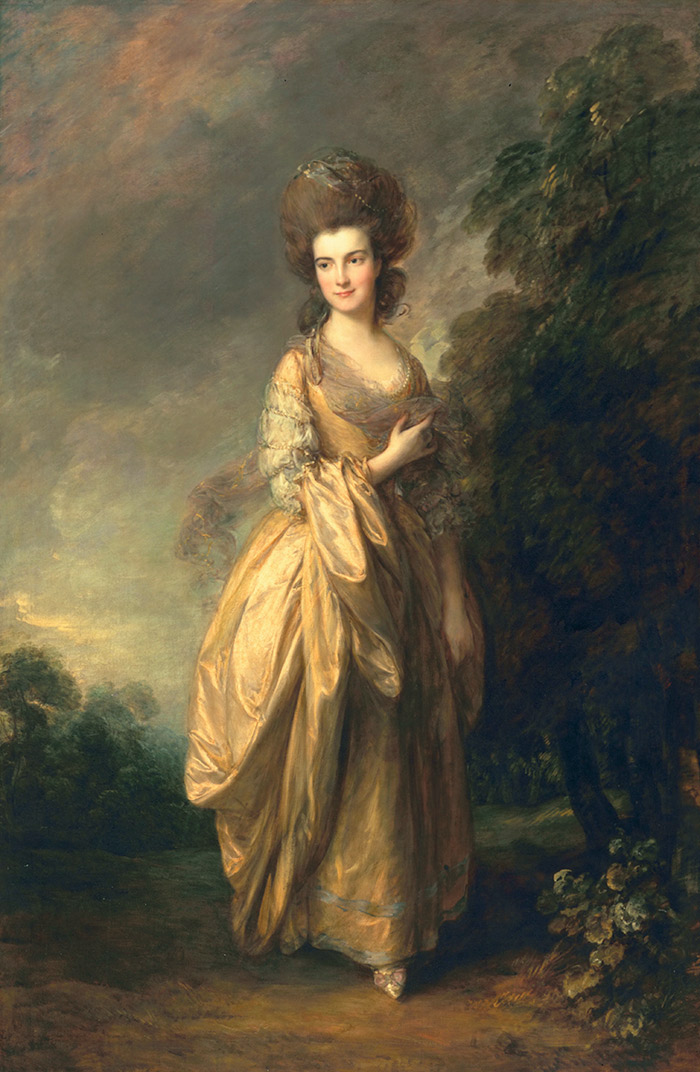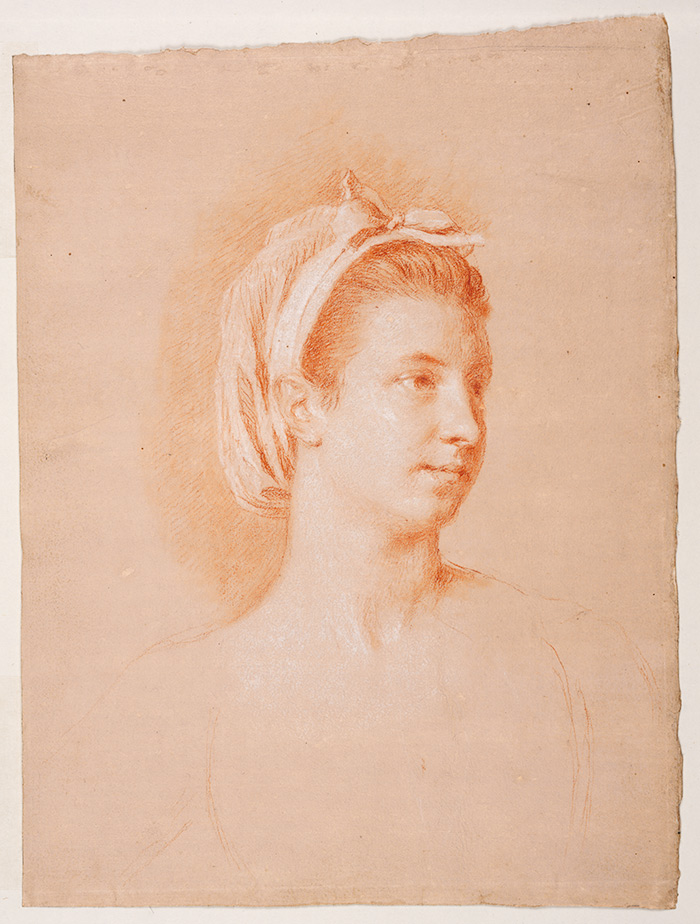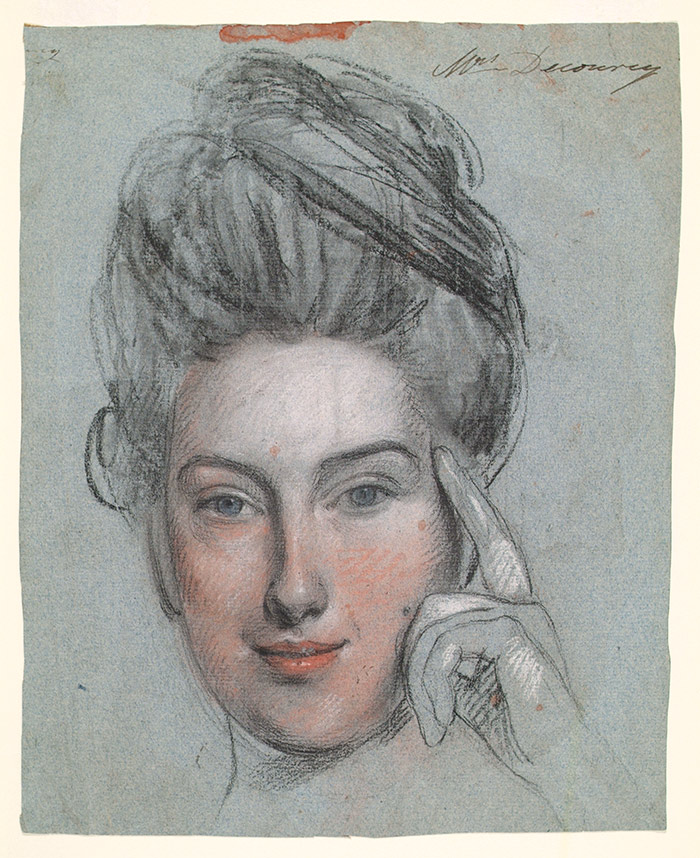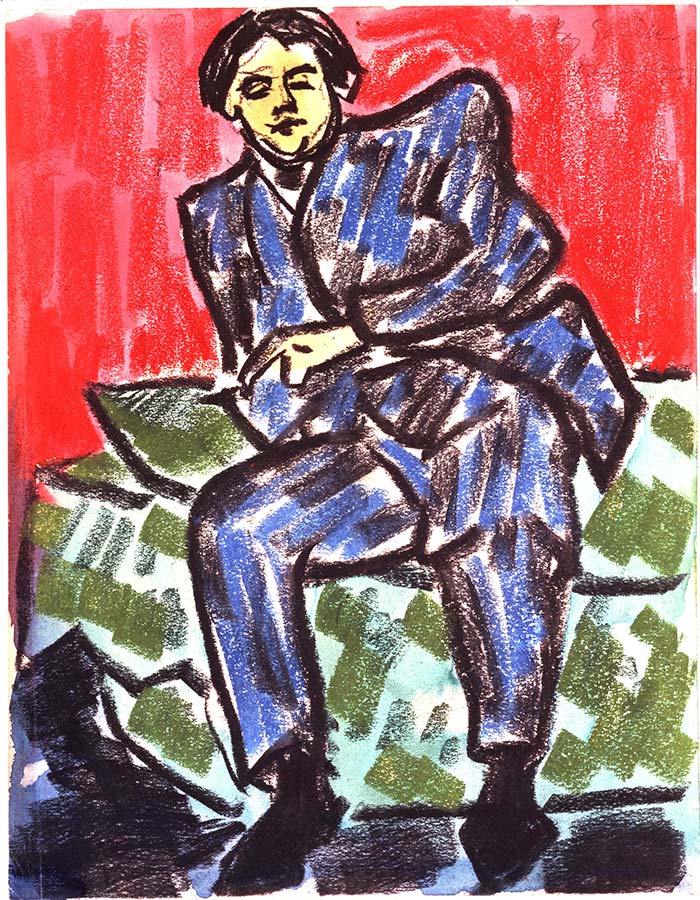The blog of The Huntington Library, Art Museum, and Botanical Gardens.
Looking at Loved Ones
Posted on Mon., Feb. 22, 2016 by

Thomas Gainsborough, Portrait of Elizabeth Beaufoy, ca. 1780, oil on canvas. The Huntington Library, Art Collections, and Botanical Gardens.
The Huntington is rightfully known for its collection of British portraits. Most of these are the product of a professional association between artist and client. For example, Thomas Gainsborough’s dazzling full-length portrait of Elizabeth Beaufoy (circa 1780), on view in the Thornton Portrait Gallery, is a flattering image of wealth and beauty. However, it’s clear that the artist, known for his ability to capture personality in paint, had no personal connection to his sitter: her face is a serene mask.
But what do you see when you look at a friend? Are there traits you perceive in your family members that only you would notice? How would you describe those closest to you differently than someone who didn’t know them well? Questions like these inspired the current Huntington Art Gallery exhibition “Friends and Family: British Artists Depict Their Circle,” which presents small-scale portraits of subjects the artists knew personally, revealing an intimate side of British portraiture.

Allan Ramsay II, Amelia Ramsay, 1776, red pencil heightened with white on tinted paper, Sir Bruce Ingram Collection. The Huntington Library, Art Collections, and Botanical Gardens.
Allan Ramsay’s portrait of his daughter Amelia, for instance, lovingly captures the vivacity for which this young woman was known. We see her lively sense of humor in the way her lips are ever-so-faintly curved upward at the sides. Her head tilts just slightly, and her eyes open wide underneath raised brows, hinting that she is a person who takes great interest in the world around her and is ready to be amused by it.
A completely different personality is captured in John Russell’s portrait of an enigmatic beauty, the wife of a friend. With one finger of her white-gloved hand resting on her temple, a slight arch to her left eyebrow, and a subtle upward curve of her lips, she seems caught up in a pleasant inner fantasy. A seductive image, it makes us wonder what she is thinking…and what Russell thought of her.

John Russell, Mrs. Decourcy, late 18th century, pastel on blue paper, Sir Bruce Ingram Collection. The Huntington Library, Art Collections, and Botanical Gardens.
George Richmond was himself a successful portraitist, but he is the one pictured in a drawing by his close friend Samuel Palmer. Palmer shows the hardworking Richmond laboring over a print, his engravers’ tools near to hand, figure hunched over in deep concentration. The portrait is both a behind-the-scenes view of the creative process and a testament to the artists’ friendship.
Another instance of artistic camaraderie is celebrated in Henri Gaudier-Brzeska’s portrait of illustrator and designer Claud Lovat Fraser. In the bright colors and bold lines of his modernist style, Gaudier-Brzeska playfully captures his friend’s famously portly figure, complete with double chin. Leaning back on one elbow, the debonair Fraser appears content and relaxed, caught in a moment of casual conversation.

Samuel Palmer, George Richmond Engraving “The Shepherd”, 1827, pen. The Huntington Library, Art Collections, and Botanical Gardens.
Because they are products of close relationships, these portraits appear as images of real, living people. Who wouldn’t want to discuss the latest news with Amelia Ramsay, or meet Claud Lovat Fraser for dinner? Captured in all their admirable qualities, lovable traits, and sometimes even disagreeable flaws, these characters, and more, await your visit—but only until March 28th.

Henri Gaudier-Brzeska, Portrait of Claud Lovat Fraser, 1912, watercolor, gouache, and charcoal on paper. The Huntington Library, Art Collections, and Botanical Gardens.
Melinda McCurdy is associate curator of British art at The Huntington.